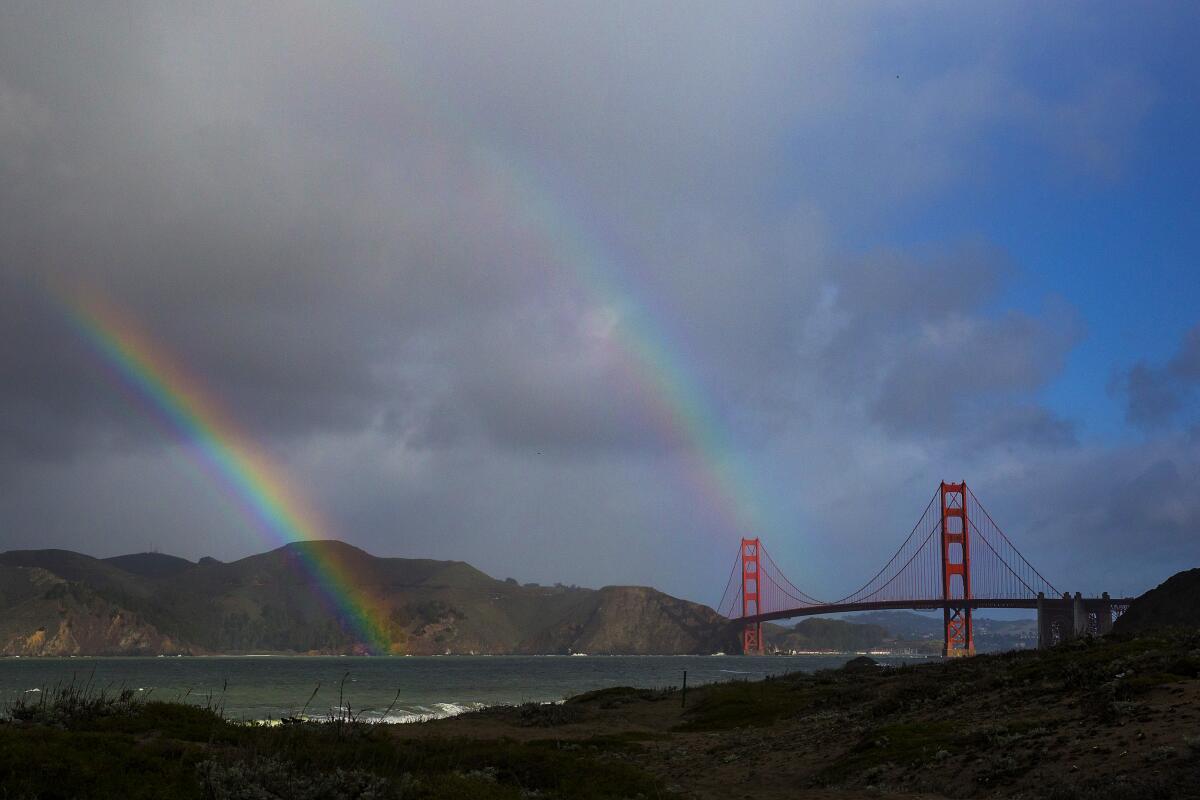Northern California rainstorm could break records and help firefighters

High clouds started to gather in the San Francisco Bay Area on Saturday afternoon as an early fall storm headed toward the Northern California coast.
“By early Sunday morning, most of the Bay Area will start seeing rain, if they haven’t already,” said Brooke Bingaman, a forecaster for the National Weather Service in the San Francisco Bay office.
The storm, which is moving south from the Gulf of Alaska, is expected to bring record-breaking rainfall to some parts of the Bay Area and could also provide some relief to firefighters battling the Mosquito fire in Placer County — the largest wildfire in the state this year.
The fire area “is expected to get some precipitation late Sunday or early Monday,” said Scott Row, a meteorologist for the National Weather Service in Sacramento. “Most of Northern California is expected to get rain.”
The weather system may bring moisture as far south as Santa Barbara. Ventura and Los Angeles will be largely unaffected.
Historical data suggest it is not uncommon for Northern California to get rain in September. What is more unusual is the amount of rain the storm is expected to bring — up to double or even quadruple the monthly average in some areas.
For example, current forecasts have downtown San Francisco receiving a total of 1 inch of rain in the next few days. The city’s average monthly rainfall for September is a quarter of an inch.
Officials are lauding the city’s progress, but some experts ponder the long-term plan — especially as seasonal outlooks indicate yet another dry winter is in store for Southern California.
Precipitation is expected to be heavy Sunday, but forecasters said the storm is generally expected to be beneficial, not dangerous. Some minor nuisance flooding is possible, and with wind speeds of up to 20 to 30 mph and gusts of up to 45 mph along the coast and in the coastal mountains, power outages may occur.
If you live in a part of California that is not expected to see rain this time around, don’t fret too much, said Kristen Stewart, a meteorologist at the National Weather Service’s office in Oxnard.
“We still have a whole winter ahead of us,” she said. “Hopefully more of it will come.”
More to Read
Sign up for Essential California
The most important California stories and recommendations in your inbox every morning.
You may occasionally receive promotional content from the Los Angeles Times.












